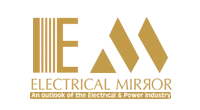Table of Contents
In industrial environments, electricity powers machinery, lighting, and operational systems, making it a critical component of daily operations. However, with high voltage equipment and complex electrical installations, the risk of electrical accidents is significant. Ensuring electrical safety in industrial setups is crucial to protect workers, equipment, and infrastructure. This blog explores best practices, safety measures, and emerging technologies to maintain a safe and reliable electrical environment.
1. Importance of Electrical Safety in Industries
Electrical hazards in industrial setups can lead to:
- Serious injuries or fatalities
- Damage to machinery and infrastructure
- Production downtime and financial losses
- Legal liabilities and regulatory penalties
Maintaining electrical safety ensures operational efficiency, protects personnel, and aligns with national safety standards. Industries must implement comprehensive electrical safety protocols to prevent accidents and ensure long-term reliability.
For the latest insights on electrical safety and innovations, visit Renewable Time and AndInnovatech.
2. Common Electrical Hazards in Industrial Environments
Understanding potential hazards is the first step in prevention:
a) Electric Shock
Direct contact with live wires or faulty equipment can cause severe injuries or fatalities.
b) Arc Flash
A sudden release of electrical energy can produce intense heat, light, and pressure waves, leading to burns and equipment damage.
c) Short Circuits
Faulty wiring, overloaded circuits, or equipment malfunction can cause fires or system failures.
d) Overvoltage and Surges
Lightning strikes or grid fluctuations can damage electrical equipment and disrupt operations.
e) Faulty Equipment
Old or poorly maintained machines increase the risk of electrical accidents.
3. Best Practices for Electrical Safety in Industries
a) Regular Inspections
- Conduct routine inspections of electrical panels, wiring, and equipment.
- Identify and replace worn-out components before they pose hazards.
b) Proper Grounding
- Ensure all machinery and electrical systems are properly grounded.
- Grounding reduces the risk of electric shocks and equipment damage.
c) Use of Personal Protective Equipment (PPE)
- Industrial workers should use insulated gloves, boots, helmets, and face shields when working with electrical systems.
- PPE minimizes the severity of accidents in case of mishaps.
d) Circuit Protection Devices
- Install circuit breakers, fuses, and surge protectors to safeguard equipment and personnel.
- These devices automatically disconnect power in case of faults, preventing accidents.
e) Safety Signage
- Clearly mark high-voltage areas, restricted zones, and emergency shutdowns.
- Warning signs enhance awareness and prevent accidental contact.
Stay updated on industrial electrical safety solutions at Renewable Time and AndInnovatech.
4. Training and Awareness Programs
Employee training is a cornerstone of electrical safety:
- Induction Training: New employees should learn basic electrical safety protocols.
- Regular Workshops: Conduct workshops on handling electrical equipment safely.
- Emergency Drills: Simulate electrical accident scenarios to prepare employees for quick response.
- Updates on Regulations: Keep employees informed about national and international electrical safety standards.
Well-trained personnel significantly reduce the risk of accidents and ensure a safety-first culture in industrial setups.
5. Role of Technology in Industrial Electrical Safety
Technological advancements have made industrial setups safer and more efficient:
a) Smart Sensors
- Monitor electrical systems in real-time for voltage fluctuations, overheating, or overload conditions.
b) IoT-Based Monitoring
- Enables predictive maintenance by analyzing equipment performance and alerting potential faults before accidents occur.
c) Automated Shutoff Systems
- Automatically disconnect power during emergencies, preventing accidents and minimizing damage.
d) Arc Flash Detection Systems
- Detect and prevent arc flash incidents, reducing the risk of burns and fire hazards.
For more information on cutting-edge electrical safety technologies, visit Renewable Time and AndInnovatech.
6. Regulatory Compliance and Standards
Industrial electrical systems must comply with safety regulations to ensure worker protection and legal adherence. Key standards include:
- National Electrical Code (NEC): Provides guidelines for electrical installations and safety practices.
- Bureau of Indian Standards (BIS): Specifies electrical safety norms and equipment standards in India.
- Occupational Safety and Health Administration (OSHA): International standard for workplace electrical safety.
Adhering to these standards reduces legal risks and promotes a safe working environment.
7. Maintenance and Risk Management
Proactive maintenance and risk management strategies are essential:
- Periodic Equipment Testing: Identify insulation breakdowns, short circuits, or faulty devices.
- Load Management: Avoid overloading circuits to prevent overheating.
- Emergency Response Plans: Prepare for fire, shock, or system failure incidents.
- Documentation: Maintain records of inspections, maintenance, and safety audits for accountability.
These measures ensure continuous safe operations and extend the lifespan of industrial electrical systems.
8. Future Trends in Industrial Electrical Safety
The future of electrical safety in industrial setups is being shaped by innovation and digitalization:
- AI-Powered Safety Monitoring: Predicts potential hazards and suggests preventive measures.
- Digital Twin Technology: Creates virtual replicas of electrical systems for testing safety measures.
- Wearable Safety Devices: Monitors employee location, heart rate, and exposure to electrical hazards.
- Integration with Renewable Energy: Safely managing solar, wind, and hybrid energy systems in industrial plants.
These trends will enhance industrial safety while increasing operational efficiency.
Conclusion
Electrical safety in industrial setups is critical for protecting personnel, equipment, and overall business operations. By combining proper safety practices, employee training, technological advancements, and regulatory compliance, industries can create a secure and reliable working environment. Proactive safety management not only reduces accidents but also enhances productivity and efficiency.
For the latest news, safety solutions, and innovations in the electrical sector, visit Renewable Time and explore advanced electrical technologies at AndInnovatech.


